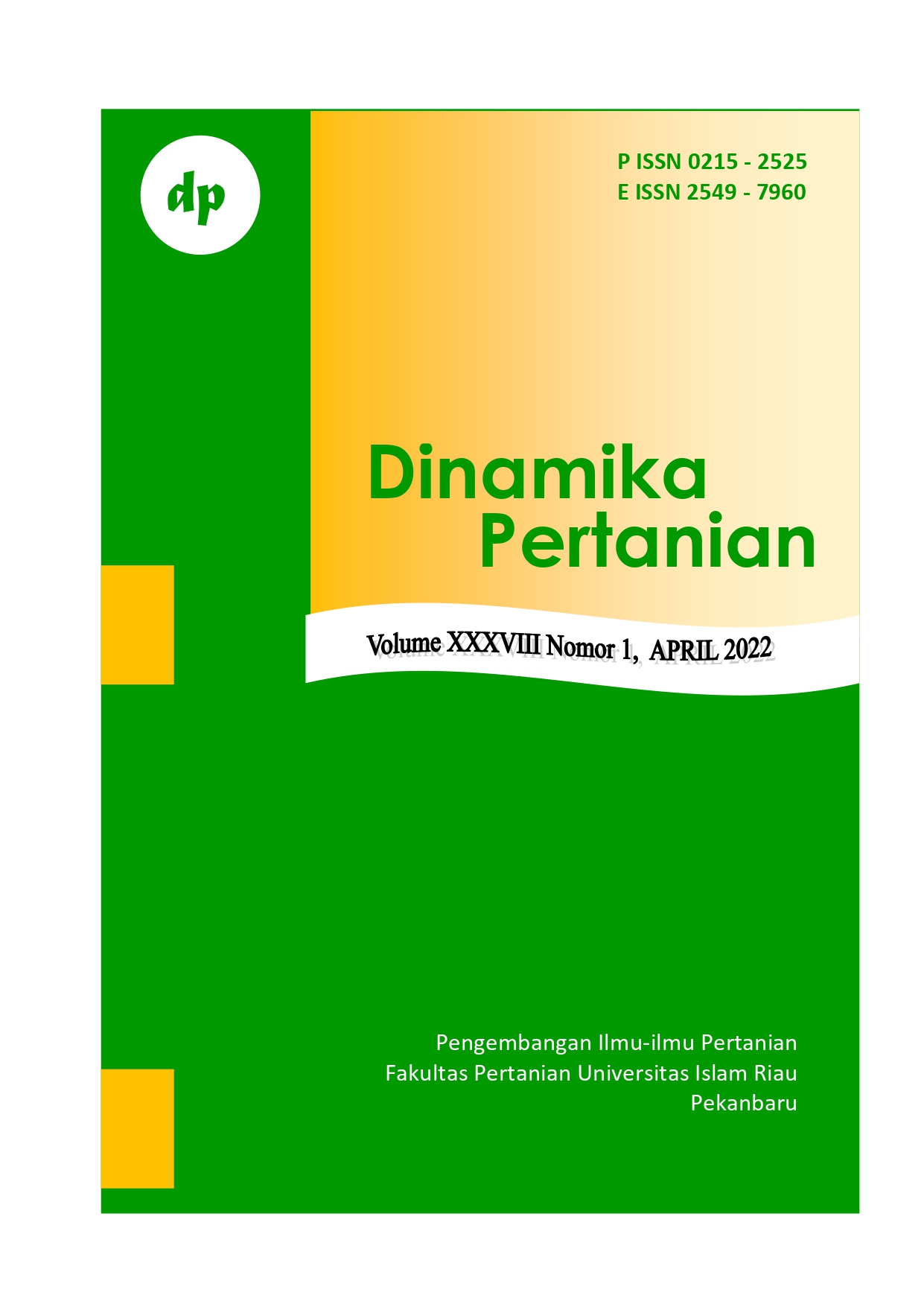ANALISIS USAHATANI NANAS DI KELURAHAN MUNDAM KECAMATAN MEDANG KAMPAI KOTA DUMAI
DOI:
https://doi.org/10.25299/dp.2022.vol38(1).10439Keywords:
Efficiency, Pineapple Farming, ProductionAbstract
Mundam Village is an area that is famous for its peatlands. Pineapple is a type of fruit that is very suitable for peatland types. This study aims to 1) Characteristics of farmers and pineapple farming profile, 2) Production costs, gross income, net income, and farm efficiency. This research was conducted for 7 months starting from June to December 2021, located in Mundam Village, Medang Kampai District, Dumai City. The location selection was done purposively with a simple random sampling of 47 farmers. The data used are primary and secondary. The data analysis used is descriptive, farming analysis, and cobb-Douglass function analysis. The results showed that: (1) Characteristics of pineapple farmers in Mundam Village are 41 years of average age, which means productive age, the average length of education for farmers is 8 years (SMP), average farming experience is 18 years, and average farming experience is 18 years. The number of members of the farmer's family is 4 people. While the business profile obtained the average land area is 1.62 ha, land status is borrow-to-use, farmers do not have a business license, the average working capital is 14,967,617/MT, production is 36,482 pieces and productivity is 22,276 pieces/arable /MT. (2) the production cost obtained is Rp. 18,559,530/MT, the gross income obtained by pineapple farmers in Mundam Village is Rp. 68,735,159/MT, net income is Rp. 50,175,619/MT, obtained an RCR (Revenue Cost Ratio) of 3.70, meaning that pineapple farming in Mundam Village is feasible to cultivate.






